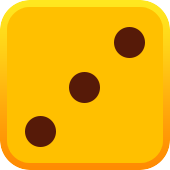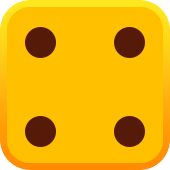












Poker rewards precise thinking more than lucky streaks. This guide turns vague advice into concrete actions you can use tonight: what to open from each seat, when to apply pressure, how to size bets, and how to protect your bankroll. You’ll see practical tables, short checklists, and examples built for both live and digital felt. Treat the ideas as a system you can test, track, and refine, not magic tricks—because consistent, measurable edges are how real strategy poker win-rates are made.
Solid play starts with a repeatable plan that tells you which hands to enter, how often to raise, and how to react to different board textures. Think of your core framework as strategy pillars: position, pressure, and pot control. When you study how to play poker strategy, anchor every decision to pot odds, stack-to-pot ratio, and fold equity rather than hunches. Use a session goal (e.g., “3-bet value hands BTN vs CO opens; c-bet 60% on dry flops”) and track whether you stuck to it over 200+ hands.
Decisions become easier and more profitable when you act last; that’s the essence of positional play. From early position, open tighter ranges (AQ+, TT+) and add suited connectors and broadways as you approach the Button. Avoid flat-calling out of position with dominated hands; prefer 3-bet/fold lines that keep initiative clean. A practical poker beginner strategy is to start with disciplined opens, then widen deliberately as postflop skill grows.
|
Position |
Open-range guideline |
Raise size (bb) |
Notes |
|
UTG/EP |
AQ+, TT+; few suited broadways |
2.2–2.5 |
Tighter to avoid multiway pots |
|
MP |
AJo+, 99+; KQs, QJs |
2.2–2.5 |
Add suited connectors selectively |
|
CO |
A9s+, AT+, 77+; broadways; SCs 65s+ |
2.0–2.3 |
Attack nits in blinds |
|
BTN |
Any Ace suited, K9s+, Q9s+, 55+; many offsuit broadways |
2.0–2.2 |
Most profitable seat |
|
SB |
Polar: premiums + bluffs |
2.5–3.0 |
Build fold equity preflop |
|
BB |
Defend wide vs small opens; 3-bet value + bluffs |
— |
Realize equity postflop |
Aggression wins dead money and simplifies tough turns and rivers. Use raises to isolate, deny equity, and extract from second-best hands; use calls when ranges are strong and dominated hands won’t fold. Passive lines fit pot-control or trap plans but should be the exception, not the rule. There is no poker perfect strategy, yet a default aggressive mindset with selective restraint yields higher EV in most pools.
|
Situation |
Aggressive action |
Passive action |
Preferred default |
|
You opened, HU on dry A-7-2 |
33–40% pot c-bet |
Check back |
Aggressive |
|
You called 3-bet OOP, K-Q-6 |
Check-raise 25–30% |
Check-call |
Mix; slightly passive |
|
Multiway wet board 9-8-7dd |
Overbet shove draws |
Check/fold |
Depends on stack |
|
River bricks after turn call |
Thin value 30% |
Check behind |
Aggressive vs stations |
Advanced play layers pressure with board-specific frequencies and lines that balance value and bluffs. Use blockers to justify bluffs (e.g., Ace-blockers on A-high boards), and deny equity with protection bets when ranges are wide. Calibrate bet sizing to target exact parts of villain’s range, not “feel.” If you need a roadmap for how to create a poker strategy, start with default lines per texture and adjust using population reads. Explore the best slot online games available at Lucky Tiger Casino and enjoy high-quality gameplay.
Good bluffs represent the credible value hands you’d also play the same way. Choose combos that remove your opponent’s strongest continues and keep outs when called. On paired, dry boards, favor small-sized bluffs; on dynamic boards, favor larger sizes that pressure draws and top pairs. Document your bluffing techniques and review showdowns to verify if your story made sense.
Start by tagging player types: tight-passive, tight-aggressive, loose-passive, loose-aggressive. Use timing, bet size, and showdowns to refine profiles across streets; consistency beats one-off “tells.” Build a note system: “BTN c-bets 80% small on dry flops; folds to XR 65%,” then exploit with raises. The skill of reading opponents turns vague live reads into actionable percentages you can plan around.
C-bets work best when your strategy poker range is stronger and the board favors your open. On low, disconnected flops you can bet frequently small; on wet, high boards c-bet less often and size up with value and strong draws. Semi-bluffs should carry real equity—two overs + backdoor is fine on flop, but turn barrels need stronger draws. Refine bet sizing tactics so your value and bluffs share sizes on the same texture.
|
Board texture |
C-bet frequency |
Size (pot %) |
Good semi-bluff draws |
|
A-7-2 rainbow |
65–80% |
25–40 |
Backdoor FDs, wheel gutters |
|
K-J-5 two-tone |
45–60% |
33–50 |
NFDs, Q-T, T-9 |
|
9-8-7 two-tone |
25–40% |
60–90 |
OESDs, pair+draw |
|
6-6-3 rainbow |
70–85% |
25–33 |
Overcards with BDFD |
Your bankroll protects you from variance so you can realize long-term edge. Separate poker funds from life expenses and pick stakes that fit your roll and mental casino game. Track hourly (live) or bb/100 (online) and only move up when both results and discipline are stable. If you pursue strategy for online poker, add stop-loss limits and table-selection rules to avoid tilt.
Casual doesn’t mean careless—set clear limits and session structures. Use conservative multiples for buy-ins to absorb downswings and keep decisions rational. Schedule reviews every 2,000 hands or 20 hours to adjust stakes. Withdraw a fixed % of profits monthly to keep motivation aligned with disciplined growth.
|
Format |
Typical buy-in |
Min bankroll |
Recommended |
|
$1/$2 NLHE cash |
$200 |
30 buy-ins |
40–50 buy-ins |
|
$2/$5 NLHE cash |
$500 |
25 buy-ins |
35–40 buy-ins |
|
Small MTTs ($11) |
$11 |
100 buy-ins |
150–200 buy-ins |
|
Sit & Go ($5) |
$5 |
50 buy-ins |
75–100 buy-ins |
Table selection can double your hourly before you play a hand. Prefer tables with two or more loose-passive players, deep stacks, and high VPIP. Leave when lineups turn reg-heavy or seat positions put you OOP against the best player. For digital pools, use waitlists and seat scripts within site rules to secure high-EV spots.
Different games reward different hand values and postflop plans. Align your preflop ranges and bet sizes with how equity realizes in each variant. Keep notes on population leaks unique to the pool you play strategy poker. Update your default charts every quarter as your database grows.
In NLHE, top pair/top kicker and overpairs drive most of your value lines, while disguised two-pair and sets realize via larger turn/river bets. Construct preflop ranges that attack late-position opens and defend suited connectors and Ax suited in position. Plan turns in advance: which rivers let you value-bet thin, which kill your action, which convert to bluffs. Use how create a poker strategy worksheets to map c-bet, barrel, and river sizes by texture.
Omaha equities run closer, so prioritize nutted draws and connectivity over single high pairs. Avoid dominated low wraps and bare nut flush draws without backup on paired boards. Choose larger flop sizes on dynamic textures where protection matters and reduce frequency on turns that crush villain’s range. For tournament stacks, prefer pot-control with marginal two-pair that shrinks quickly across runouts. Before you play, make sure to read the terms on the bonus page so you know the wagering requirements.




